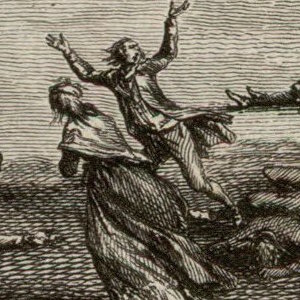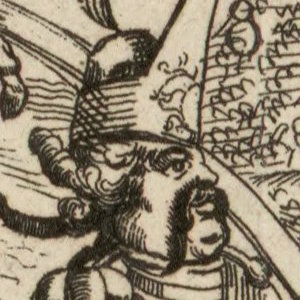Europe
Hymn of 9 Thermidor
This hymn commemorates the overthrow of Robespierre and the Committee of Public Safety by the men of the National Convention during the French Revolution. It had its debut performance on the first anniversary of that event (27 July 1795).
Hymn of 21 January
With lyrics drawn from a Republican Ode composed by the revolutionary poet Lebrun in 1793, this hymn commemorates the execution of France's Louis XVI.
Hymn for the Festival of Marriage
Although festivals drew much smaller audiences during the final years of the Revolution, the government continued to celebrate them. Now, however, they tended to commemorate apolitical events: thus a festival, and hymn, devoted to the subject of marriage.

Drowning in the Loire by Order of the Fierce Carrier
On 6–7 December 1793, Jean–Baptiste Carrier, a deputy sent by the Convention to suppress the insurrection at Nantes, accepted, if he did not in fact welcome, a measure proposed by the local Revolutionary Tribunal to fill seven boats with an estimated 200–300 prisoners (not all of them yet convict

Fusillades at Lyon, Ordered by Collot–D’Herbois
Lyon’s rebellion against the central government in September 1793 had terrible repercussions that seemed only to worsen with the initiation of collective trials and immediate executions by firing squad.

Siege and Taking of the City of Lyon
In September 1793, in response to the unwillingness of the municipal government of Lyon to enforce the legislature’s laws, the Republic sent the deputies and Committee of Public Safety members Georges Couthon and Jean–Marie Collot d’Herbois with a republican army to lay siege to the city and dest

Summoning to Execution
One of the most fearful parts of the Terror was its unpredictability. Many were swept up in suspicion, including unexpected, even nighttime arrests.

Nine Emigrants Go to the Guillotine
In a woodcut that appeared in Révolutions de Paris, the guillotine is used before a crowd of soldiers and patriotic onlookers, to execute nine "émigrés" who had tried to fell France and thus demonstrated themselves to be traitors.

The Counterrevolution
This cartoon mocks all the leading figures of the "Counterrevolution," including the former royal family and its blood relatives, plus the clergy, the nobility, and specific individuals, such as Mirabeau, who had supported the monarchy in the early years of the Revolution.

Tyranny Tremble
A very potent image associating France's revolutionary war with an attack on tyrants. Contemporaries would have understood the target, "tyrants," to be the monarchs.